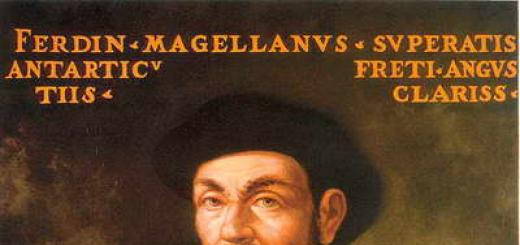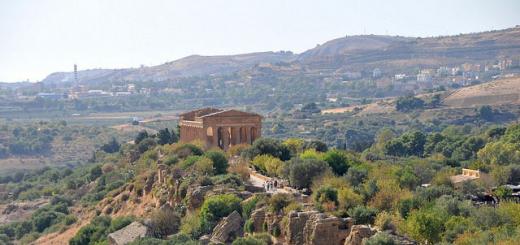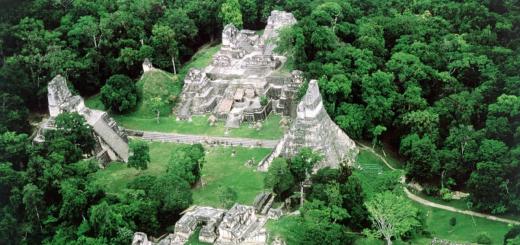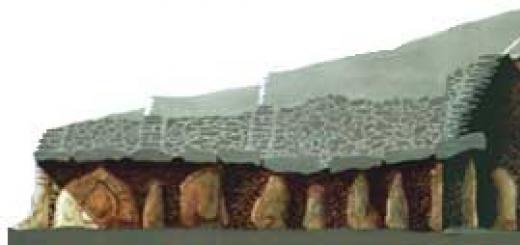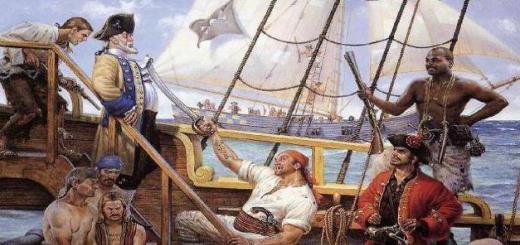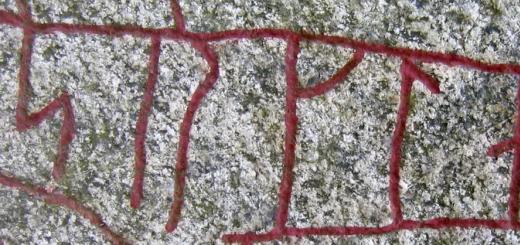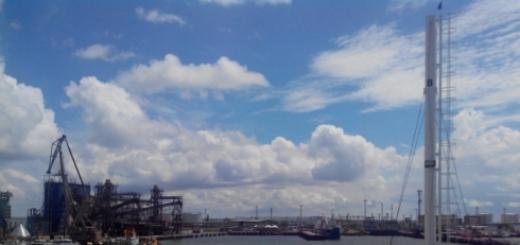Page 1 of 4
- a nobleman from Normandy, an adventurer.
Very little is known about Levasseur's origins. The researchers were only able to establish that François Levasseur, Seigneur de Rene de Boisdoufle and de Letre, came from Conyer (Cogners), in Maine. A number of authors claim that he arrived on the island of St. Christopher in the early 1620s with the Ami P. B. d'Esnambukom and W. de Roissay, who are traditionally considered the founders of the first French colony in the Antilles. In fact, Levasseur could have appeared on the said island earlier. So, according to I. Gue when d'Esnambuc first landed on St. Christopher in 1625, Levasseur was already here “with eighty crew members and forty blacks - his last prize of ebony (that is, black slaves, - V.G.), taken on the shores of Africa”. The same author reports that Levasseur and his crew ended up on the island after being shipwrecked there. In anticipation of the arrival of some ship that could help them, the French grew a trial crop of tobacco on St. Christopher.
Note that according to some researchers, the predecessor of de Roissay and d'Esnambuc on Saint Christopher could be a Lyon captain Chantel, expelled in 1624 from Cayenne (Guiana) by rebellious Indians; only after the unification of the detachments of de Roissay-d'Esnambuc and Chantel, about 80 Frenchmen and 40 Negro slaves turned out to be on the island. If this information is reliable, then, perhaps, even before the appearance on Saint Christopher of the teams of de Roissay and d'Esnambuc, there were already two French detachments there: one under the command of Levasseur, the other under the command of Chantel. The presence of Levasseur on the island before d'Esnambuc arrived there is confirmed by the latter's IOU, in which he undertook to return 3,000 livres of silver to Levasseur in gratitude for the support that he gave him after arriving on the said island.
In the summer of 1626, Urbain de Roissay and d'Esnambuc went to France with a cargo of tobacco. However, the main purpose of their return to their homeland was to find patrons who could support their enterprise. On October 2 of the same year, both captains received from the government a privilege to colonize St. Christopher and other islands. With the support of Richelieu, on October 31 of the same year, the St. Christopher Company was organized - “for the development and settlement of the islands of St. Christopher, Barbada [Barbados] and others located at the entrance to the American Gulf between the eleventh and eighteenth degrees [north] of the equator line ... ". Company members were to receive half of all income from St. Christopher. A tenth of the profits went to d'Esnambuc and de Roissay, the same amount to the king. Levasseur's interests were completely ignored.
The ships of the expedition arrived at their destination in early May 1627. To avoid disagreements with the British from the colony T. Warner, founded at the beginning of 1624, the French decided to conclude an agreement with them on the division of the island. The central part of St. Christopher remained with the British; d'Esnambuc took possession of the northern part, de Roissay - the southern. In 1629 the Spanish fleet drove the English and French off St. Christopher, but as soon as the Spanish left, the English and French colonies were restored. In 1635, the French settlements on St. Christopher became the property of the Company of the Isles of America, formed on February 12 at the initiative of Richelieu. In the same year, d'Esnambuc founded colonies on the islands of Martinique and Dominica.
The scarcity of sources makes it impossible to determine where Levasseur was at that time. His name reappears in documents only in 1638 in connection with the death of d'Esnambuc (the latter died in 1637), who never paid his debt. In the registers of the Company of the Isles of America, it is recorded:
"Meeting on Wednesday, January 6, 1638. The aforesaid Sieur Berruyère presented a petition submitted to the Company by Sieur Levasseur, in which he relates the conquest of the island of St. Christopher from the savages before the Company was formed, and that the Sieur d'Esnambuc promised to reimburse him for the expenses incurred, desiring [the Company] to reimburse part of his expenses; [Levasseur's] demand to the Company that she allow him to deliver fifty passengers to the said island, exempt from all duties ... "
.
This document shows that at the beginning of 1638, Levasseur and fifty of his Huguenot friends were in France, from where they were going to return to the West Indies at the expense of the Company of the Isles of America. The company advised him to collect d'Esnambuc's debt from the latter's heirs.
Apparently, Levasseur arrived on St. Christopher along with the knight of the Order of Malta, the commander F. de Longvieille de Poinsy, who, at the suggestion of Richelieu, on February 15, 1638, was appointed lieutenant-general of St. Christopher and, in addition, governor-general of the French Antilles. Sailing from Le Havre on 12 January 1639, she arrived at Saint Christopher in February.
More than one adventure novel has been written about corsairs, pirates, filibusters, buccaneers and other "gentlemen of fortune" and more than one film has been shot. Shrouded in a halo of romance, these charismatic sea robbers often become role models, because many of them allegedly joined the pirates not at all out of the call of the heart, but through the fault of circumstances.
However, in real life, everything looked far from being so attractive. The annals of history, starting from time immemorial, are filled with bloody pages of murders, extortions and robberies perpetrated by pirates. Amaro Pargo, Olivier Levasseur, Henry Morgan and many others gained dubious fame, terrifying seafarers and coastal cities.
Ancient craft
Sea robbery appeared at the dawn of civilization along with the development of trade. Merchant ships, loaded with expensive goods, but poorly armed, became easy prey for pirates. The first written mention of sea robbers dates back to the time of the Egyptian pharaohs.
In ancient times, pirates freely plied the Adriatic, Aegean and Mediterranean seas. The ancient Greek policies waged a periodic struggle with their dominance, but it did not bring tangible results. Pirates continued to rob merchant ships and sell passengers and crew into slavery.
Later, the Roman Empire was able to effectively resist sea robbery. Pompey in the 1st century BC, having collected 500 ships and an army of 120 thousand people, cleared the Mediterranean of pirates within three months. Only with the fall of Rome in the 5th century AD did maritime robbery begin to revive again in this region.
Age of Discovery
By the end of the Middle Ages, Europeans had achieved great success in shipbuilding and navigation. The Spaniards and the Portuguese learned how to build caravels - capacious, fast and light ships that can sail against the wind.
The development of cartography, along with the use of the compass, now made it possible to sail on the high seas, and the hypothesis of the sphericity of the Earth gave hope to reach the rich East by going west. All this prepared the Great geographical discoveries.
For two hundred years, starting from the second half of the XV century. and ending with the middle of the 17th century, European navigators explored previously unknown oceans, seas, continents and islands. On the one hand, geographical discoveries were a step forward, but, on the other hand, they gave impetus to colonial conquests and an unprecedented surge in sea robbery.
It was this era that prepared the conditions for the emergence of pirates, whose names are still not forgotten. Especially if they are connected with the search for stolen treasures. For example, the cryptogram of Levasseur, the leader of the thugs who operated first in the Caribbean Sea and then in the Indian Ocean, remains unsolved to this day.
Legalized piracy
At first glance, it may seem surprising that the European monarchies themselves, to a certain extent, became the cause of the unprecedented activity of pirates, with whom they subsequently fought persistently. However, it is.
Holland, Portugal, Great Britain, Spain and France in the XVI-XVII centuries. competed for new colonies and supremacy in world trade. The stakes in such a struggle were very high, so the states involved in it neglected scrupulousness when it came to the choice of means.
Thus appeared privateering - legalized piracy. At first, the authorities issued patents for the robbery of enemy merchant ships to private individuals only for the period of hostilities. However, the privateers who got used to it were in no hurry to leave a relatively easy way of making money even after they ended.

According to some reports, Olivier Levasseur, mentioned above, began his career as a privateer, robbing Spanish ships in the Atlantic Ocean on behalf of True, he soon, like many of his craft comrades, preferred to “work” for himself.
Piracy in the Caribbean
Sea robbery played an important role in the process of primitive accumulation of capital in the countries of Western Europe. The vast majority of pirates and privateers were Dutch, French, Spanish, English and Portuguese.

In the middle of the XVII century. a period called by historians the Golden Age of sea robbery began. It lasted approximately 80 years, and the main arena of pirate activity at that time was the Caribbean, where ships carrying gold, tobacco, silver, indigo, sugar and other goods cruised.
By the end of the same century, when the colonial states finally divided the spheres of influence, they began to eradicate maritime robbery in the Caribbean with their common forces. For this reason, many pirates, and among them Olivier Levasseur, moved to other parts of the globe in order to continue their illegal fishing without interference.
Man without a past
Reliable information about the origin of Levasseur has not been preserved. Some researchers believe that he belonged to the same family as Paul Levasseur, another French pirate from Calais. However, there is no documentary evidence for this hypothesis.

There is also an assumption that Olivier comes from Tortuga, an island in the Caribbean, where Francois Levasseur was governor in the 40s of the 17th century. If so, then he belonged to a noble family from Conyers (Maine).
The same applies to the year of birth of Olivier Levasseur. We don't know the exact date. Most likely, he was born between 1680 and 1690. The only source dating back to the time when Olivier Levasseur was hunting in the Caribbean and then in the Indian Ocean is Charles Johnson's History of the Most Notorious Pirates, published in 1720.
Forced migration
During the War of the Spanish Succession (1701-1714), the government of Louis XIV generously distributed patents to privateers who robbed ships in the Atlantic Ocean. However, after its completion, France joined the coalition of European powers created to eradicate piracy in the region.
It is known that in 1716 Levasseur, nicknamed La Buse, commanded a crew of 70 sea robbers. Cruising in the Caribbean, they successfully robbed Dutch, Spanish and English ships bound for Europe or America.
Around the same time, a meeting of pirate leaders took place in the Bahamas, where the majority were in favor of moving to calmer places, as the campaign against sea robbery was gaining momentum. Among those who decided to migrate was the pirate Olivier Levasseur.
In the waters of the Indian Ocean
West Africa became the place where he traded in robbery in 1718-1719. along with Captains Cocklin and Davis. After robbing at least 15 ships at the mouth of the Sierra Leone River, they parted ways. This time the French pirate went with his crew to the Indian Ocean via

In the summer of 1720, Levasseur's ship was wrecked near one of them. His team was picked up by England and Taylor - the captains of two pirate ships. Soon England was displaced and landed on the island of Mauritius, and Levasseur was elected in his place.
Together with Taylor, they captured first two Arab ships, and then the cargo of an English squadron belonging to the East India Company. The booty was large, and the pirates profitably sold it to Dutch merchants in the Indian city of Cochin. From there they again turned towards Mauritius.
fabulous trophy
Replenishing provisions and repairing the ships, Taylor and Levasseur headed for Madagascar. On their way lay the island of Reunion, which at that time was called Bourbon. Pirates approached him on April 8, 1721 and found a Portuguese ship battered by a storm in the roadstead.
Information about the events that followed can be found in the archives of various European countries, because the booty captured by a gang of sea robbers is considered one of the largest in the history of piracy.
On board the Portuguese flagship was the archbishop and viceroy of Goa, but most importantly - mountains of diamonds, jewelry, expensive fabrics, furniture, silver and gold bars, dishes, religious objects, money, etc. According to historians, the cost of only diamonds is Today's rate ranges from 3 to 4 million dollars.
Dilemma
The division of the booty took place in Madagascar. Each received 42 diamonds and £4,000. At the beginning of the 18th century, this was an unheard-of wealth that made it possible to live comfortably in Europe.
Nevertheless, the pirates did not even think of leaving a profitable trade. It is known that in 1722 they robbed an Arab ship en route with goods from China, after which they moved from Madagascar to Delagoa Bay (East Africa). The local Dutch garrison not only did not resist the sea robbers, but joined their ranks in full force.
It took the pirates several months to repair the ships and decide what to do next: return to the Caribbean or stay in the Indian Ocean. Taylor eventually sailed for the West Indies, while Levasseur, with a crew of 250, continued to rob merchant ships off the coast of East Africa until his ship ran aground and was wrecked. Since that time, Levasseur settled in Madagascar.
End of career
In 1642 it became a French colony. It is only 700 km from Madagascar. In 1724, the governor of the island promised Levasseur and his gang an amnesty if they broke with piracy and moved to Réunion. Few were willing. Most, including La Buza, refused.
Over the next six years, they continued to hunt in the Indian Ocean, making their base on the small island of Sainte-Marie. In 1730, the captain of the French ship "Medusa" deceived Levasseur and took him prisoner in shackles to Reunion. Here the pirate appeared before the court, which sentenced him to hang.

It was rumored that one of the members of the Council that ruled the island was especially active in advocating the capture and execution of La Buse, as he intended to take possession of his wealth. If this is true, he was most likely puzzled by what happened next.
Treasure mystery
The execution took place in July 1730 on the main square of Saint-Paul, which at that time was the administrative center of the island. Before ascending the scaffold, the pirate threw a piece of paper into the crowd of spectators, declaring that his treasures would go to the one who could decipher the records.
Skeptics consider this story a legend. However, the cryptogram does exist. And for about three centuries, the treasures of Olivier Levasseur continue to excite the minds of treasure hunters from different countries. They can be understood, given the size of the booty captured by the pirates from the Portuguese in 1721. But this was only one of the episodes in the career of La Buza.

Be that as it may, but the treasure of Olivier Levasseur continues to be searched today in those located near Madagascar. True, so far no one has managed to correctly decipher the cryptogram of the cunning pirate. Consequently, it is still too early to put an end to the history of the treasures of La Buza.
Centuries ago, numerous islands of the Indian Ocean served as a haven for merciless pirates. "Gentlemen of Fortune" used their secluded bays for repairing ships and relaxing, and deep caves in the rocks, hidden holes in impenetrable thickets served as excellent safes for looted wealth.
Vierge du Cap
Whether pirate treasures are stored on these pieces of land or not, it is difficult to say for sure, but each island is shrouded in one or more chilling legends telling about mysterious maps leading to countless treasures, mysterious tunnels guarded by magical signs, decayed corpses of adventurers and other mysticism. .
One such legend has been driving treasure hunters crazy for years. We are talking about the treasures of the famous pirate Olivier Levasseur, nicknamed the Vulture, who kept sea travelers and merchants at bay for two decades. Historians say that this filibuster, who at one time captured the Portuguese ship Vierge du Cap, got untold wealth.
April 13, 1721 Levasseur and his team, scouring the ocean in search of prey, stumbled upon the Vierge du Cap, pretty battered by the storm. The crew of the ship was unable to resist the corsairs - after the storm experienced, people fell off their feet, and most of the guns were sent overboard in order to keep the huge ship afloat at least a little. Almost without a fight, having seized the ship and tied the crew, the pirates rushed into the holds.
Olivier Levasseur was the last of the famous pirates of the Indian Ocean. Although by then the British had driven the sea robbers out of the West Indies, they still had something to profit from on the busy trade routes around the Cape of Good Hope to East Africa, India and Indonesia.
Even a superficial estimate of the production exceeded bee's expectations. For Levasseur and his people, the dream of any filibuster came true - the Vierge du Cap turned out to be a real treasure trove. Such notable persons as the Viceroy of India Count di Ericeira and the Archbishop of the Portuguese possessions of Goa traveled on the ship. Such high-ranking persons, going to Europe, took with them almost all of their fortune. Chests of gold, barrels stuffed with diamonds, priceless church utensils, among them is a golden cross studded with pearls above a human height. And all this went to a handful of rootless ragamuffins. The size of the booty is evidenced by the fact that during the division, the share of one ordinary pirate amounted to five thousand golden guineas and forty-two diamonds. Levasseur, according to his accomplices, took all the church belongings of the archbishop on account of his captain's share and hid them somewhere in the Seychelles.
 |
| Levasseur cipher |
crazy money
One hundred million pounds sterling will turn anyone's head. It is in this amount that the most optimistic treasure seekers estimate the Levasseur treasure. Against their numerous background, perhaps the most striking victim of the search fever is still considered the former British officer Reginald Herbert Cruz-Wilkins.
In 1948, Reginald Cruz-Wilkins arrived on the island of Mahe, the main island in the Seychelles archipelago. He expected to rest there for three weeks, to heal old wounds. But fate decreed otherwise. The ship on which the Englishman was supposed to return home was delayed for three whole months. While away the time in the port taverns. Cruise-Wilkins became close friends with an obscure Norwegian, a former whaler who had been carrying with him for decades a mysterious cryptogram, supposedly a copy of one of Levasseur's famous dying messages, unsuccessfully trying to decipher the information hidden in incomprehensible images. It should be noted here that such copies are by no means exceptional. Every self-respecting treasure hunter has a complete set of pirate maps and ship logs carefully redrawn from archival sources. True, skeptics question both most of these sources and all sorts of transcripts of pirated records. Studying Levasseur's parchments, many note that the famous corsair, in order to be able to create such complex cryptograms, had to have remarkable knowledge in the field of ancient history, astronomy and other sciences. But that's not the point. With the permission of the Norwegian, Reginald redrawn the mysterious signs for himself and ... forever plunged into the search for the famous treasure.
Syndicate of Optimists
Soon, Reginald became friends with a French couple who had been unsuccessfully searching for pirate treasures for several years. Imbued with confidence in the retired officer, the couple showed him a lot of letters and other documents of that era, unambiguously leading to the coveted gold. After reviewing these documents, Reginald decided to start the business on a grand scale. With all his money, plus the rest of the savings of new acquaintances, he organized a syndicate to search for Levasseur's treasure. Then he hired workers and began to excavate in the place where the map indicated.
 |
| signs from the Levasseur cryptogram |
There was no rock on the map. However, despite the obstacle that had arisen, the members of the syndicate were already so convinced of the proximity of the treasure that it was decided by any means to get her out of the way. For several weeks the workers were chiselling, blowing up and moving fragments of boulders, the money was melting before our eyes, and the coveted cave still did not appear.
Happiness is near
Finally, the treasure hunters were rewarded for their patience - under the blown-up stones, a mysterious staircase with drawings was again discovered. However, after a few weeks of work, the searchers were faced with a new misfortune - the diggers had already rested against the sandy shore, and the fatal steps went on and on, sinking under water, apparently to the very bottom of the ocean.
At an urgent meeting of the syndicate, it was decided: there is nowhere to retreat, fantastic wealth looms ahead, which means that it is necessary to build a dam and drain a huge piece of the coastal zone. All participants were convinced that the cave was somewhere there, below the water level. In it, according to the documents, there are eight coffin-like chests stuffed with the gold of the viceroy of India and the diamonds of the archbishop, and a golden cross is also stored there ...
At the cost of incredible efforts, the searchers built a dam and even partially pumped out water, but they did not find any cave at the bottom. Reginald asked for more money, just a little, but they no longer believed him, and those who believed were completely ruined. The syndicate disintegrated without reaching its goal.
Twenty years and ten thousand pounds of his own savings was spent by a former British officer in search of Levasseur's treasure. There also went another twenty-five thousand pounds received from members of the syndicate. And here are all the finds made over two decades: a sword blade, a flintlock pistol, the remains of a musket, a jug for wine, several small figurines, a cannon and one coin from the time of Charles I.
Today, visitors to the island of Mahe can admire the remains of concrete walls half covered with sand - the dam built by Reginald, the only remaining evidence of the most expensive and most unsuccessful treasure expedition.
Also known by the nicknames La Buze(fr. La buse, which means " Buzzard") and La Bush(fr. La bouche).
| Olivier Levasseur | |
|---|---|
| fr. Olivier Levasseur | |
| Aliases |
Buzzard La Buze La Bush |
| Date of Birth | around 1690 |
| Place of Birth | France |
| Citizenship | France |
| Citizenship | France France |
| Date of death | July 7(1730-07-07 ) |
| Place of death | Saint-Paul, Reunion |
| Cause of death | Executed by hanging |
| Occupation | Piracy |
| Olivier Levasseur at Wikimedia Commons | |
Biography
Initially made raids in the Atlantic Ocean, until the British and French authorities decided to put an end to piracy in the Caribbean. This led to the movement of pirates to other lands.
The legend of the treasure
According to one of the legends about pirates [ ] , Olivier Levasseur hid one of the largest pirate treasures in history. The legend begins like this: Olivier Levasseur goes to the scaffold. And suddenly, unexpectedly for all those present, La Buze cries out "Find my treasures, who can!" and throws a cryptogram into the crowd, which indicates the location of the treasure. The Levasseur cryptogram has not yet been deciphered. The most common version of the La Buza treasure is that it is hidden in one of the Seychelles, but the treasure has not yet been found.
In 1947, the former big game hunter Wilkins, an Englishman, set out to find the treasure of Olivier Levasseur. After many years of studying the facts, he came to the conclusion that La Buze wove the Greek myth of the twelve labors of Hercules into the cryptogram. Until 1970, Wilkins was engaged in treasure hunting and excavations on the island of Mahe in the Seychelles group, located about 1000 km north of
From Wikipedia, the free encyclopedia
| Olivier Levasseur | |
| fr. Olivier Levasseur | |
| Aliases: |
Vulture |
|---|---|
| Date of Birth: | |
| Place of Birth: |
unknown |
| Citizenship: | |
| Citizenship: |
France France |
| Religious affiliation: | |
| Date of death: | |
| Cause of death: | |
| Occupation: |
Piracy |
Olivier Levasseur(fr. Olivier Levasseur; OK. 1670 - July 7) - French pirate, also known by the nicknames La Buze(fr. La Buse, which means " vulture") and La Bush(fr. La Bouche).
Biography
Initially made raids in the Atlantic Ocean, until the British and French authorities decided to put an end to piracy in the Caribbean. This led to the movement of pirates to other lands.
La Buze moved to the Indian Ocean, where he began to hunt together with Captain England, and then with Captain Taylor, who replaced him, commanding the frigate La Defense. On April 4, 1721, they set sail for Madagascar, meeting the Portuguese ship La Vierge du Cap along the way. The sailboat was in Saint-Denis harbor on Reunion Island undergoing repairs after a severe storm. Without much effort, the pirates managed to take possession of the treasure. These events are described in the novel "Piastres. Piasters!!!" by Stephen Roberts, published in 2016.
According to some versions, in the period from 1725 to 1729, Olivier Levasseur lived in the Seychelles with a team of 250 thugs. In 1730 he was caught, sentenced to death and hanged in the town of Saint-Paul on the island of Réunion.
Right before his death, he left a clue leading to his treasure, an encrypted cryptogram.
The legend of the treasure
 According to one legend about pirates, Olivier Levasseur hid one of the largest pirate treasures in history. The legend begins like this: Olivier Levasseur goes to the scaffold. And suddenly, unexpectedly for all those present, La Buze cries out "Find my treasures, who can!" and throws a cryptogram into the crowd, which indicates the location of the treasure. The Levasseur cryptogram has not yet been deciphered. The most common version of the La Buza treasure is that it is hidden in one of the Seychelles, but the treasure has not yet been found. In 1947, the former big game hunter Wilkins, an Englishman, set out to find the treasure of Olivier Levasseur. After many years of studying the facts, he came to the conclusion that La Buze wove the Greek myth of the twelve labors of Hercules into the cryptogram. Until 1970, Wilkins was engaged in treasure hunting and excavations on the island of Mahe in the Seychelles group, located about 1000 km north of Madagascar and about 2000 km east of the Kenyan coast in the Indian Ocean. He believed that the treasure was in a cave on the shore of the island, but apart from old pistols and a few coins, he could not find anything. Having squandered his fortune, the treasure hunter eventually gave up, but the Seychelles authorities still claim that the treasure is hidden on the island of Mahe.
According to one legend about pirates, Olivier Levasseur hid one of the largest pirate treasures in history. The legend begins like this: Olivier Levasseur goes to the scaffold. And suddenly, unexpectedly for all those present, La Buze cries out "Find my treasures, who can!" and throws a cryptogram into the crowd, which indicates the location of the treasure. The Levasseur cryptogram has not yet been deciphered. The most common version of the La Buza treasure is that it is hidden in one of the Seychelles, but the treasure has not yet been found. In 1947, the former big game hunter Wilkins, an Englishman, set out to find the treasure of Olivier Levasseur. After many years of studying the facts, he came to the conclusion that La Buze wove the Greek myth of the twelve labors of Hercules into the cryptogram. Until 1970, Wilkins was engaged in treasure hunting and excavations on the island of Mahe in the Seychelles group, located about 1000 km north of Madagascar and about 2000 km east of the Kenyan coast in the Indian Ocean. He believed that the treasure was in a cave on the shore of the island, but apart from old pistols and a few coins, he could not find anything. Having squandered his fortune, the treasure hunter eventually gave up, but the Seychelles authorities still claim that the treasure is hidden on the island of Mahe.
In literature
La Boucher, (La Buze, Gorlopan) is one of the characters in Stephen Roberts' novel "Piastres. Piasters!!!", a book that is the prehistory of Treasure Island.
Lavasseur is one of the characters in the novel The Odyssey of Captain Blood, which takes place a few years before the birth of a real pirate.
La Buz - mentioned in the first novel by A. A. Bushkov “Piranha. The first throw”, which opens a series of novels about Kirill Mazur.
To the cinema
Captain Levasseur is one of the characters in the film adaptations of Captain Blood (1924), Captain Blood's Odyssey (1935), Captain Blood's Odyssey (1991), as well as the film The King of Madagascar directed by Oleg Ryaskov (in production).
He is the inspiration for Gol Dee Roger's "Pirate King" from the popular manga and anime One Piece. The "legend of the treasure" itself, in fact, is the plot of the whole story.
Write a review on the article "Levasseur, Olivier"
Literature
An excerpt characterizing Levasseur, Olivier
- She went. Suddenly there was a strong wind. The girl lost her hat, and her long hair was combed ...Here he could no longer hold on and began to laugh abruptly, and through this laughter he said:
And the whole world knows...
That's where the joke ends. Although it was not clear why he was telling it and why it had to be told without fail in Russian, Anna Pavlovna and others appreciated the secular courtesy of Prince Hippolyte, who so pleasantly ended Monsieur Pierre's unpleasant and ungracious trick. The conversation after the anecdote crumbled into small, insignificant talk about the future and the past ball, the performance, about when and where someone will see each other.
Thanking Anna Pavlovna for her charmante soiree, [a charming evening] the guests began to disperse.
Pierre was clumsy. Fat, taller than usual, broad, with huge red hands, he, as they say, did not know how to enter the salon and even less knew how to get out of it, that is, before leaving, to say something especially pleasant. Besides, he was scattered. Rising, instead of his hat, he grabbed a triangular hat with a general's plume and held it, pulling the sultan, until the general asked to return it. But all his absent-mindedness and inability to enter the salon and speak in it were redeemed by an expression of good nature, simplicity and modesty. Anna Pavlovna turned to him and, with Christian meekness expressing forgiveness for his outburst, nodded to him and said:
“I hope to see you again, but I also hope that you will change your mind, my dear Monsieur Pierre,” she said.
When she told him this, he did not answer anything, only leaned over and showed everyone once more his smile, which said nothing, except this: "Opinions are opinions, and you see what a kind and nice fellow I am." And everyone, including Anna Pavlovna, involuntarily felt it.
Prince Andrey went out into the anteroom and, leaning his shoulders on the footman who was throwing a cloak over him, listened indifferently to the chatter of his wife with Prince Hippolyte, who also went out into the anteroom. Prince Hippolyte stood beside the pretty, pregnant princess and stubbornly looked straight at her through his lorgnette.
“Go, Annette, you will catch a cold,” said the little princess, saying goodbye to Anna Pavlovna. - C "est arrete, [Done,]" she added quietly.
Anna Pavlovna had already managed to talk to Lisa about the matchmaking she was planning between Anatole and the sister-in-law of the little princess.
“I hope for you, dear friend,” said Anna Pavlovna, also quietly, “you will write to her and tell me, comment le pere envisagera la chose.” Au revoir, [How the father will look at the matter. Goodbye,] - and she left the hall.
Prince Hippolyte went up to the little princess and, bending his face close to her, began to say something to her in a whisper.
Two lackeys, one the princess, the other, waiting for them to finish talking, stood with a shawl and a redingote and listened to them, incomprehensible to them, French dialect with such faces as if they understood what was being said, but did not want to show it. The princess, as always, spoke with a smile and listened with a laugh.
“I am very glad that I didn’t go to the envoy,” said Prince Hippolyte: “boredom ... It’s a wonderful evening, isn’t it, wonderful?”
“They say that the ball will be very good,” answered the princess, twitching her sponge with her mustache. “All the beautiful women of society will be there.
- Not all, because you will not be there; not all,” said Prince Hippolyte, laughing joyfully, and, grabbing the shawl from the footman, even pushed him and began to put it on the princess.
From embarrassment or deliberately (no one could make it out), he did not lower his arms for a long time when the shawl was already put on, and seemed to be hugging a young woman.
She gracefully, but still smiling, pulled away, turned and looked at her husband. Prince Andrei's eyes were closed: he seemed so tired and sleepy.
- You are ready? he asked his wife, looking around her.
Prince Hippolyte hurriedly put on his coat, which, according to the new, was longer than his heels, and, tangled in it, ran to the porch after the princess, whom the footman was putting into the carriage.
- Princesse, au revoir, [Princess, goodbye,] - he shouted, tangling his tongue as well as his legs.
The princess, picking up her dress, sat down in the darkness of the carriage; her husband was adjusting his saber; Prince Ippolit, under the pretext of serving, interfered with everyone.
- Excuse me, sir, - Prince Andrei dryly unpleasantly turned in Russian to Prince Ippolit, who prevented him from passing.
"I'm waiting for you, Pierre," said the same voice of Prince Andrei affectionately and tenderly.

